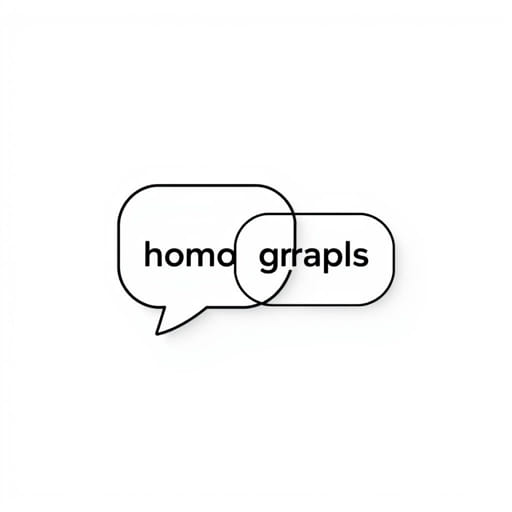What Is Homographs In English
English is full of fascinating word patterns, and one particularly interesting concept is homographs. These words often confuse learners and even native speakers because they look exactly the same in spelling, but they may have different pronunciations, meanings, or both. Understanding homographs is essential for improving reading comprehension, pronunciation, and vocabulary skills. Whether you are a student, a teacher, or just someone who loves language, recognizing and using homographs correctly can help you communicate more effectively.
Understanding the Definition of Homographs
The term ‘homograph’ comes from Greek roots: ‘homo’ meaning ‘same’ and ‘graph’ meaning ‘writing.’ So, homographs are words that are written the same way but have different meanings. Sometimes they are pronounced the same, and sometimes they are pronounced differently. This dual nature makes homographs unique and a little tricky at times.
Key Features of Homographs
To identify homographs, you should look for the following characteristics:
- They have the same spelling.
- They have different meanings.
- They may have the same or different pronunciations.
Because of these differences, context is essential when interpreting homographs in written or spoken English. The surrounding words and the overall sentence structure provide clues to the correct meaning and pronunciation.
Examples of Common Homographs
Below are several examples of homographs that are frequently used in English. These help to illustrate how the same word can take on different meanings depending on its usage:
- Lead (to guide) vs.Lead (a type of metal)
- Tear (to rip something) vs.Tear (a drop of liquid from the eye)
- Wind (air in motion) vs.Wind (to turn or twist something)
- Bow (to bend forward) vs.Bow (a weapon for shooting arrows)
- Row (a line of things) vs.Row (to paddle a boat)
These examples show how varied the meanings and pronunciations can be, even for words that are spelled the same.
Homographs with Different Pronunciations
Some homographs not only differ in meaning but also in how they are pronounced. These are especially important to understand for anyone working on pronunciation or oral communication in English.
- Bass (a type of fish, pronounced ‘base’) vs.Bass (low sound in music, also pronounced ‘base’)
- Invalid (not valid, pronounced IN-vuh-lid) vs.Invalid (a sick person, pronounced in-VAL-id)
- Object (a thing, pronounced OB-ject) vs.Object (to oppose, pronounced uhb-JECT)
- Refuse (to decline, pronounced ri-FYOOZ) vs.Refuse (garbage, pronounced REF-yoos)
In each pair, both the pronunciation and meaning are distinct. These differences can only be understood from the sentence context and sometimes require practice to master.
Homographs with the Same Pronunciation
Not all homographs are pronounced differently. Many have the same pronunciation but still carry more than one meaning. These are a bit easier for listening and speaking but still require attention when reading.
- Bark (the sound a dog makes) vs.Bark (the outer layer of a tree)
- Bat (an animal) vs.Bat (a tool used in baseball)
- Match (a competition) vs.Match (a small stick used to start a fire)
- Right (correct) vs.Right (a direction or entitlement)
Even though these words are spoken the same way, their meanings are different, so careful reading or listening is necessary to understand which meaning is intended.
How Context Determines Meaning
Context is the key to understanding homographs. Since the words look the same, your brain relies on the words around the homograph to determine the correct interpretation. This is why reading practice and sentence analysis are important when learning English vocabulary.
Here are a few example sentences that show how context helps determine the meaning of a homograph:
- He decided toleadthe group through the forest. (guide)
- The pipes are made oflead, which can be dangerous. (metal)
- She shed atearduring the sad movie. (drop of liquid)
- Be careful not totearthe page. (rip)
These sentences make it clear how important surrounding words are in clarifying which meaning is appropriate.
Tips to Learn and Remember Homographs
Learning homographs can be both fun and challenging. Here are some tips that might help:
- Read regularly: The more you read, the more you’ll encounter homographs in context.
- Practice pronunciation: Use online dictionaries or audio tools to hear how the word sounds.
- Make flashcards: Write the word on one side and two different meanings and example sentences on the other side.
- Use in conversation: Try using both meanings of a homograph in your own sentences to reinforce memory.
These methods will help you understand homographs more deeply and use them correctly in both writing and speaking.
Why Homographs Matter in English Learning
Homographs are more than just a linguistic curiosity. They play an important role in language comprehension. When learners understand homographs, they gain a greater ability to decode sentences, understand nuances, and expand their vocabulary. They also become better listeners and speakers, as they can recognize the subtle differences in meaning based on tone, stress, and context.
Homographs also demonstrate the richness and flexibility of the English language. They show how words can evolve over time and take on multiple meanings. This is part of what makes English such a vibrant and widely spoken language across the world.
Homographs in English are words that are spelled the same but have different meanings, and sometimes different pronunciations. They require attention to context and can be a fun challenge to learn. By studying common examples, practicing pronunciation, and using them in real-life sentences, learners can improve their mastery of English. Homographs offer insight into the flexibility and complexity of language, and they help enhance both written and spoken communication. Whether you are reading a book or speaking in a conversation, knowing homographs will give you an edge in understanding and using English more effectively.
